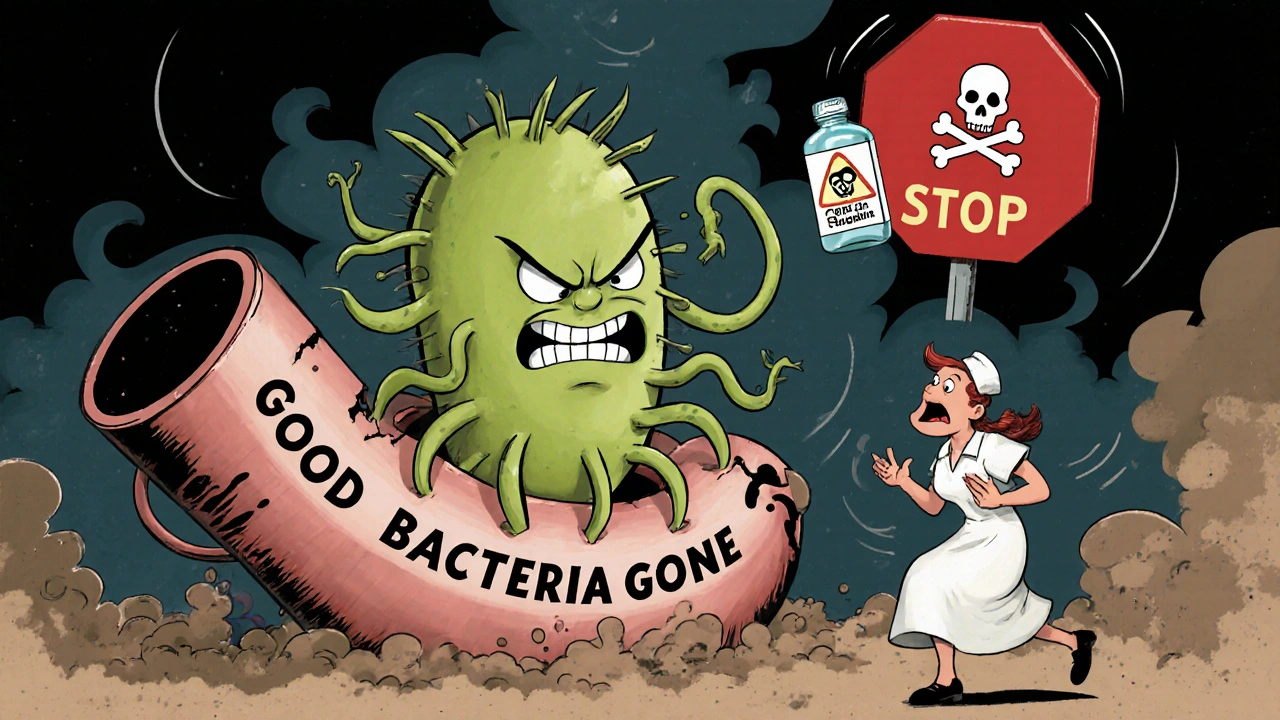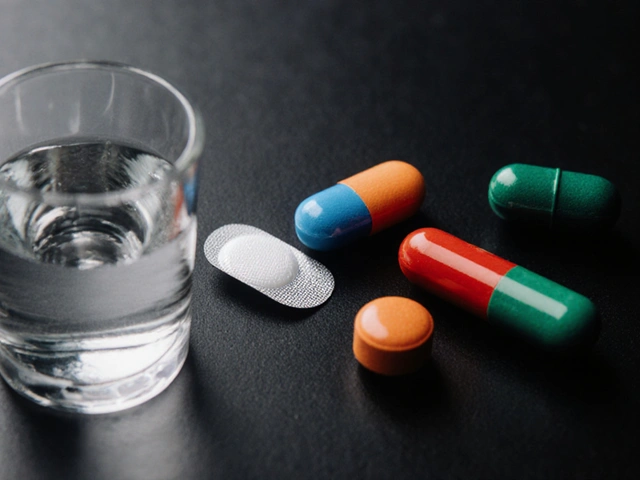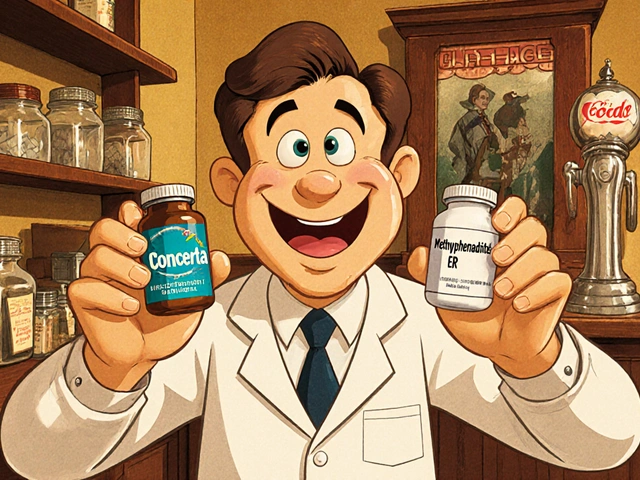Cleocin is the brand name for clindamycin, an antibiotic used to treat serious bacterial infections. Unlike broad-spectrum antibiotics that hit many types of bacteria, Cleocin targets specific strains-especially those that cause skin, respiratory, dental, and pelvic infections. It’s not something you pick up over the counter. You need a doctor’s prescription, and it’s often used when other antibiotics like penicillin won’t work or when someone is allergic to them.
How Cleocin Actually Works
Cleocin doesn’t kill bacteria outright. Instead, it stops them from making the proteins they need to grow and multiply. This is called a bacteriostatic effect. Once the bacteria can’t reproduce, your immune system steps in and clears the rest. It’s especially effective against anaerobic bacteria-germs that thrive in places without oxygen-like deep skin abscesses, infected teeth, or pelvic inflammatory disease.
It also works well against certain types of staph and strep infections, including MRSA (methicillin-resistant Staphylococcus aureus) in some cases. Doctors often turn to Cleocin when first-line antibiotics fail or when the infection is in a hard-to-reach area, like the bones or inside the abdomen.
Common Uses for Cleocin
Here are the most frequent reasons doctors prescribe Cleocin:
- Skin and soft tissue infections: Boils, cellulitis, abscesses-especially if they’re large or not improving with other meds.
- Respiratory infections: Lung abscesses, aspiration pneumonia, or severe sinus infections caused by anaerobic bacteria.
- Dental infections: Severe tooth abscesses or jawbone infections (osteomyelitis) where the infection has spread.
- Pelvic infections: Endometritis, tubo-ovarian abscesses, or complications after childbirth or abortion.
- Acne (topical form): Cleocin T gel or lotion is used for moderate to severe acne, targeting the bacteria that clog pores and cause inflammation.
- Prevention before surgery: Sometimes given before dental or gastrointestinal procedures to prevent infection in high-risk patients.
It’s not used for viral infections like colds or the flu. Using antibiotics when they’re not needed increases the risk of resistant bacteria, which is why doctors are careful about when to prescribe it.
Forms of Cleocin and How to Take It
Cleocin comes in several forms, each suited for different types of infections:
- Oral capsules: Usually 75 mg or 150 mg. Taken by mouth, typically every 6 to 8 hours. Must be taken with a full glass of water to avoid throat irritation.
- Topical gel or lotion: Applied directly to acne-prone skin once or twice daily. Often paired with benzoyl peroxide to reduce resistance.
- Injection: Given in hospitals for serious infections. Can be injected into a muscle or through an IV.
- Vaginal cream: Used for bacterial vaginosis. Applied with an applicator once daily for 3 to 7 days.
It’s important to finish the full course-even if you feel better after a few days. Stopping early can leave behind the toughest bacteria, which then multiply and cause a worse relapse.
Side Effects You Should Watch For
Most people tolerate Cleocin well, but it’s not without risks. The most common side effects include:
- Nausea, vomiting, or diarrhea
- Bad taste in the mouth (especially with the oral form)
- Stomach pain or bloating
- Itching or rash (especially with topical use)
But there’s one serious side effect that can be life-threatening: Clostridioides difficile (C. diff) infection. This happens when Cleocin wipes out good gut bacteria, letting C. diff take over. Symptoms include watery diarrhea (three or more times a day), fever, stomach cramps, and sometimes blood in stool. If this happens, stop taking Cleocin and call your doctor immediately. C. diff can lead to colitis, sepsis, or even death if not treated quickly.
Studies show that Cleocin carries one of the highest risks for C. diff among all antibiotics-higher than amoxicillin or cephalexin. That’s why it’s reserved for cases where other options aren’t suitable.

Who Should Avoid Cleocin
Not everyone can take Cleocin. Avoid it if you:
- Have had a previous allergic reaction to clindamycin or lincomycin
- Have a history of C. diff infection
- Have inflammatory bowel disease like Crohn’s or ulcerative colitis
- Are taking certain muscle relaxants (like succinylcholine) or anesthetics-Cleocin can interfere with them
Pregnant women can take Cleocin if needed, but it’s used cautiously. It passes into breast milk, so nursing mothers should talk to their doctor about whether to pause breastfeeding during treatment.
Cleocin vs. Other Antibiotics
Here’s how Cleocin stacks up against common alternatives:
| Antibiotic | Best For | C. diff Risk | Common Side Effects | Alternative if Allergic to Penicillin? |
|---|---|---|---|---|
| Cleocin (clindamycin) | Deep skin, dental, pelvic, anaerobic infections | High | Diarrhea, nausea, bad taste | Yes |
| Amoxicillin | Ear, sinus, strep throat | Low | Rash, upset stomach | No |
| Metronidazole | Bacterial vaginosis, C. diff, gut infections | Low | Metallic taste, dizziness | Yes |
| Doxycycline | Acne, Lyme disease, respiratory | Medium | Sun sensitivity, upset stomach | Yes |
| Moxifloxacin | Severe lung infections, resistant strains | Medium | Nausea, tendon pain, QT prolongation | Yes |
Metronidazole is often used for vaginal or gut infections, but it doesn’t work as well on skin abscesses. Doxycycline is great for acne and tick-borne illnesses but doesn’t cover anaerobes as thoroughly. Cleocin fills a specific niche: serious infections caused by bacteria that live without oxygen and are resistant to penicillin.
What to Do If Cleocin Doesn’t Work
If you’ve been on Cleocin for 3-4 days and your symptoms aren’t improving-or if they’re getting worse-you should contact your doctor. Possible reasons:
- The infection is caused by a virus or fungus, not bacteria
- The bacteria are resistant to clindamycin
- You have a mixed infection (e.g., both aerobic and anaerobic bacteria) and need a combo treatment
- You’re not taking it correctly (missed doses, not with water, etc.)
Your doctor may order a culture test to identify the exact bacteria and test which antibiotics it responds to. In hospital settings, they might switch to vancomycin, linezolid, or a combination therapy.

Storage and Handling
Store oral capsules at room temperature, away from moisture. The topical gel should be kept at 20-25°C (68-77°F). Don’t freeze it. Discard any unused vaginal cream after 7 days, even if there’s some left. Never share your medication with someone else-even if they have similar symptoms.
When to Call Your Doctor
Call your healthcare provider right away if you experience:
- Watery or bloody diarrhea
- Severe stomach cramps or fever
- Rash, swelling, or trouble breathing (signs of allergy)
- Yellowing of skin or eyes (possible liver issue)
- Unusual fatigue or weakness
These aren’t common, but they’re serious. Don’t wait to see if it gets better.
Is Cleocin stronger than amoxicillin?
Cleocin isn’t necessarily "stronger"-it’s more targeted. Amoxicillin works well for common infections like strep throat or ear infections, but it doesn’t cover anaerobic bacteria. Cleocin is used when those deeper, harder-to-treat infections are present. So it’s not about strength-it’s about matching the right antibiotic to the type of bacteria.
Can I drink alcohol while taking Cleocin?
There’s no direct dangerous interaction between Cleocin and alcohol like there is with metronidazole. But alcohol can worsen stomach upset and may slow your recovery. Most doctors recommend avoiding alcohol while on antibiotics to give your body the best chance to heal.
How long does it take for Cleocin to start working?
Most people notice improvement in symptoms within 2 to 3 days. For skin infections, redness and swelling may start to go down. For dental or pelvic infections, pain should lessen. But it can take up to 7 days for full results, especially in deeper infections. Don’t stop early just because you feel better.
Can Cleocin cause yeast infections?
Yes. By killing off good bacteria in the gut and vagina, Cleocin can let yeast overgrow. Vaginal yeast infections are common after a course of Cleocin. Symptoms include itching, burning, and thick white discharge. Over-the-counter antifungal treatments usually help, but talk to your doctor if it keeps happening.
Is there a generic version of Cleocin?
Yes. The generic name is clindamycin. It’s available as capsules, topical gel, vaginal cream, and injection. Generic clindamycin is significantly cheaper than the brand-name Cleocin and works the same way. Most insurance plans cover the generic, and pharmacies often stock it as the default option.
Can Cleocin be used for acne long-term?
Topical Cleocin (gel or lotion) is often used for 3 to 6 months to treat acne. But using it alone for longer than that can lead to bacterial resistance. That’s why dermatologists usually pair it with benzoyl peroxide, which kills bacteria differently and reduces resistance risk. Long-term oral Cleocin for acne is rare and not recommended due to side effect risks.
Final Thoughts
Cleocin is a powerful tool, but it’s not a first choice for every infection. It’s reserved for situations where other antibiotics won’t do the job-or when allergies make them unsafe. Its biggest risk is C. diff, so it’s critical to take it exactly as prescribed and watch for warning signs. If you’re prescribed Cleocin, ask your doctor why it’s the right option for you, what to watch for, and whether a generic version is available. Understanding how it works helps you use it safely and get the best results.





